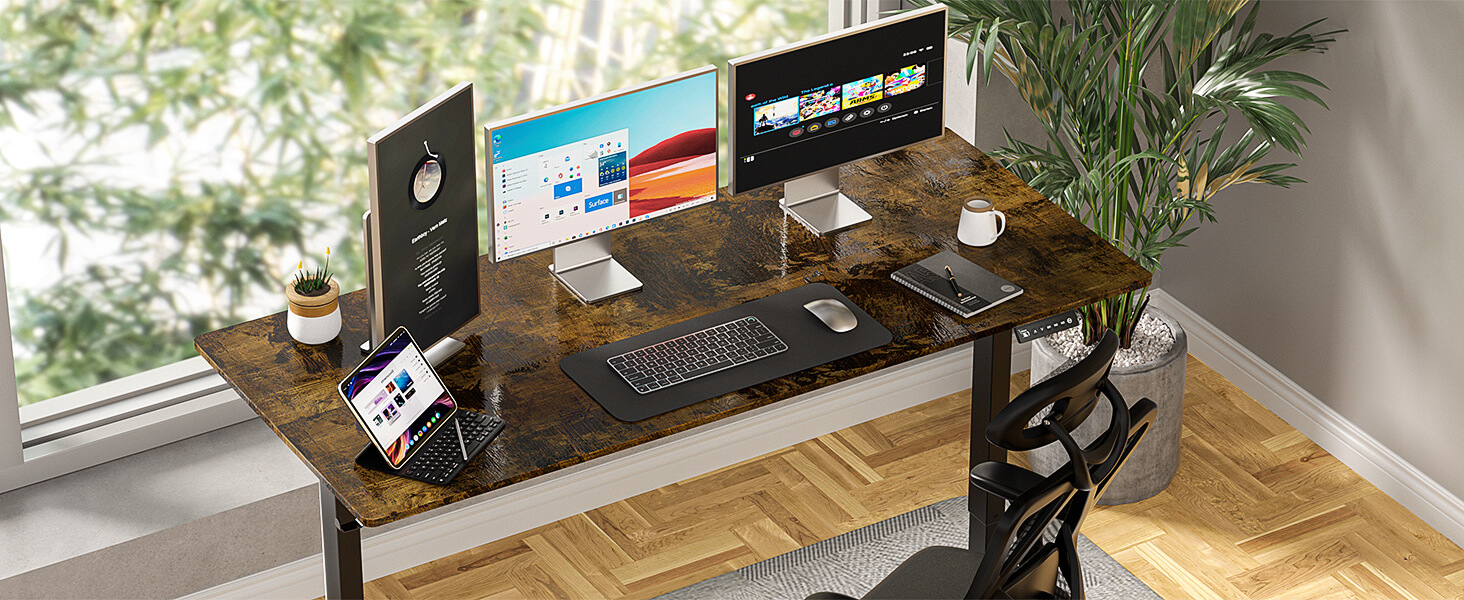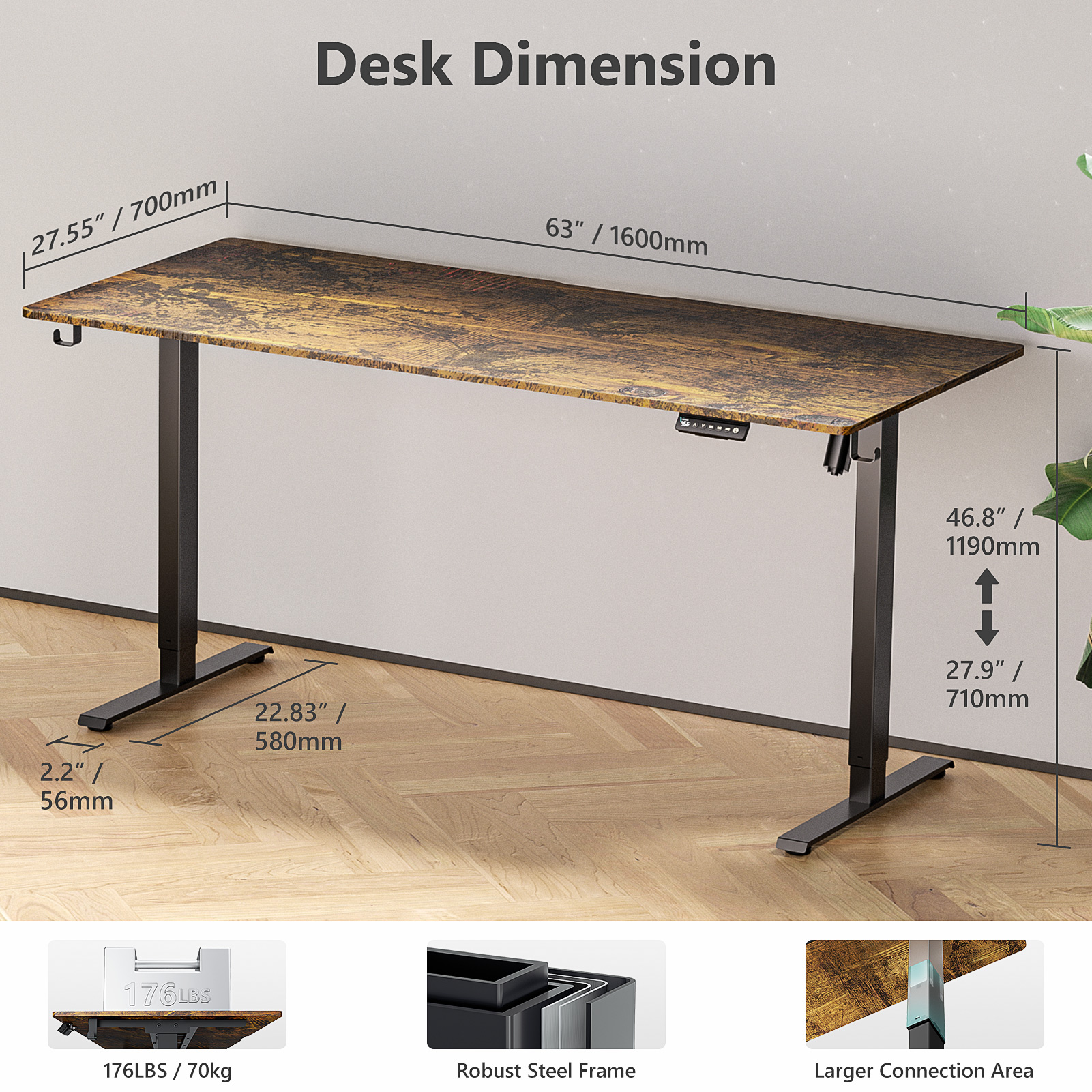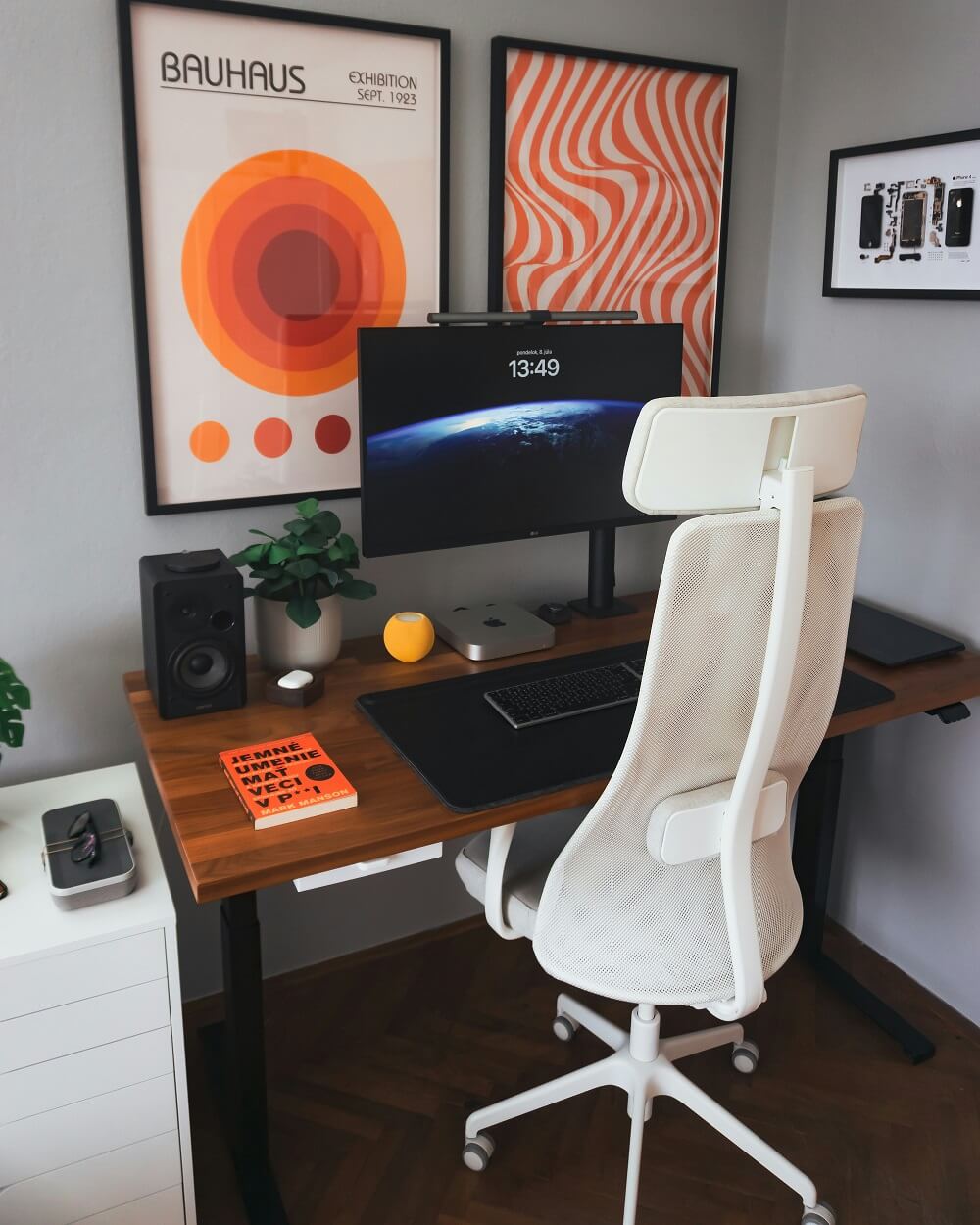In today’s workplace, improving both health and productivity is key. Sitting for long periods can cause back pain, poor posture, and other health issues. As a solution, many people turn to ergonomic desks—such as standing desks, adjustable desks, and adjustable height desks. These desks help reduce discomfort and boost performance.
This article will explain how an ergonomic desk can improve your health and work performance. We will also share tips on setting up your desk for maximum comfort and efficiency.

Why Ergonomics Matter
Ergonomics focuses on designing workspaces to reduce injury risk and improve comfort. When your workspace is properly set up, it can help prevent pain and discomfort, boosting your productivity. Studies show that people using ergonomic desks experience fewer health problems and stay focused longer.
Poor posture and sitting too much can lead to fatigue and pain. An ergonomic desk setup promotes healthier posture and offers flexibility. This makes it easier to work comfortably and efficiently throughout the day.
Health Benefits of a Standing Desk
Using a standing desk, especially an adjustable height desk, can greatly improve your health. These desks let you alternate between sitting and standing, offering several key health benefits.
1. Better Posture
Standing naturally aligns your spine, which reduces strain on your back and neck. It helps you avoid slouching, a common problem when sitting for too long. With an adjustable desk, you can quickly switch between sitting and standing to keep your posture in check.
2. Reduced Chronic Pain
Long periods of sitting lead to chronic pain in the back, neck, and shoulders. A standing desk can help reduce this strain. By alternating between standing and sitting, you relieve pressure on your muscles and joints, lowering the risk of pain.
3. Improved Circulation
Sitting for too long can restrict blood flow, causing discomfort. Standing encourages better circulation. It also prevents blood from pooling in your legs. By standing, you keep your body active, helping to reduce the risk of swelling or circulation issues.
4. More Energy and Less Fatigue
Standing promotes physical activity, which helps maintain your energy levels. Sitting for too long can lead to fatigue, especially in the afternoon. Switching between sitting and standing with an adjustable desk keeps you energized, reducing the feeling of being sluggish.

How an Ergonomic Desk Boosts Work Performance
Not only do ergonomic desks improve your health, but they also enhance your work performance. Here’s how:
1. Higher Productivity
When you feel comfortable, you’re able to focus better. An ergonomic desk helps maintain good posture, which reduces discomfort and distractions. This means you can work more efficiently. Studies show that people who use ergonomic desks report higher productivity and fewer distractions.
2. Less Mental Fatigue
Mental fatigue can set in when you’re uncomfortable. Sitting or standing too long can affect your focus. Alternating between positions with an adjustable desk keeps your body active and your mind alert. As a result, you’ll be able to concentrate more easily.
3. Better Mood and Job Satisfaction
Physical discomfort can negatively affect your mood. When you’re in pain or tired, you may feel less engaged at work. Using an ergonomic desk allows you to stay comfortable, leading to a more positive attitude. Employees with ergonomic desks report higher job satisfaction and less stress.
Setting Up Your Ergonomic Desk
To maximize the benefits of your ergonomic desk, it’s important to set it up properly. Here are some simple tips for adjusting your desk for better health and productivity:
1. Desk Height
When standing, the desk should be at elbow height. Your arms should form a 90-degree angle, and your hands should hover comfortably over the keyboard. When sitting, your thighs should be parallel to the floor, and your feet should rest flat on the ground.
2. Monitor Position
Your monitor should be at eye level, so the top of the screen is slightly below your line of sight. This helps you avoid neck strain. Position the screen about 20-30 inches away to prevent eye strain.
3. Keyboard and Mouse
Make sure your keyboard and mouse are at a comfortable height. Your arms should remain at a 90-degree angle, with your wrists straight. If needed, use a keyboard tray to adjust their position.
4. Take Breaks and Move
Even the best ergonomic setup can’t replace movement. Make it a habit to alternate between sitting and standing every 30-60 minutes. Also, take short breaks to walk or stretch. This helps keep your muscles engaged and prevents stiffness.

How an Adjustable Desk Improves Health and Performance
An adjustable height desk gives you the flexibility to sit or stand. This simple change can greatly improve your health. Standing helps improve circulation, reduce pain, and increase energy. It also allows for a more comfortable and productive workday.
With an adjustable desk, you can switch between positions easily. This flexibility ensures you’re not stuck in one position for too long. This reduces fatigue and helps you stay focused and productive.
Conclusion
Using an ergonomic desk, including standing desks and adjustable height desks, can improve both your health and work performance. By allowing you to switch between sitting and standing, these desks reduce discomfort, improve posture, and enhance circulation.
With the right setup, you can feel more energized and focused throughout your day. Whether you sit or stand, an ergonomic desk helps you stay comfortable and productive. Set up your workspace for maximum comfort, and you’ll see the benefits in your health and performance.
